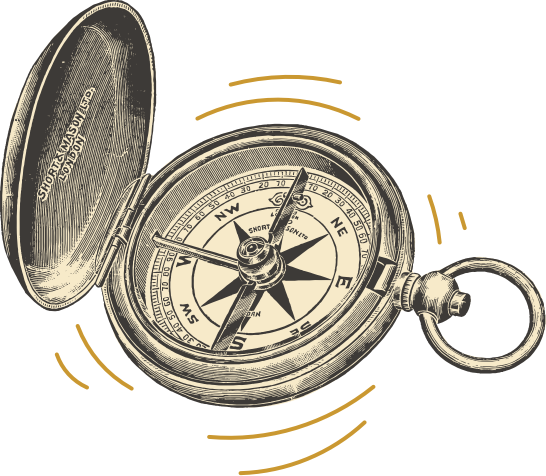Four Fascinating Facts About the Fourth
Happy birthday, America! The Fourth of July is our annual red-white-and-blue barbecue-and-fireworks bonanza celebrating freedom and apple pie and all that jazz. In addition to all that, celebrate this Fourth on one of our countless in-person scavenger hunts and virtual games, including the Best of the U.S. Virtual Tour of America Scavenger Hunt, an online scavenger hunt from sea to shining sea.
Do you know where the holiday and its trappings came from? Where’d we get fireworks, and hot dogs, and even the holiday itself? Because we love uncovering historical mysteries for our hunts, we decided to illuminate a bit of the often overlooked, sometimes secret history of the Fourth of July.
Declaration Day: The Holiday Itself
The Fourth of July marks the day delegates from the original 13 colonies signed the Declaration of Independence. Everybody knows that! Except that’s not accurate. The Continental Congress voted almost unanimously in favor of independence on July 2, 1776. (New York temporarily abstained.) July 4 is the day the Congress voted to adopt an edited version of the Declaration of Independence—and they didn’t even sign the thing until August 2.
Everyone remembers the July 4 date partly because Philadelphia chose July 4, 1777, for its inaugural commemoration of independence—even though, being at war, they didn’t exactly have independence yet. Patriotic celebrations gained traction after we re-kicked Britain’s butt in the War of 1812, and Congress made the Fourth of July a federal holiday in 1870.
Bang, Zoom: The Fireworks

As early as 200 B.C., folks in China were roasting bamboo until the air pockets inside exploded, creating the world’s first primitive fireworks. By 900 A.D., Chinese alchemists had stumbled their way into creating an early form of gunpowder, and soon after started putting it in paper tubes instead of bamboo. Chinese armies would attach firecrackers to arrows to rain destruction upon their enemies.
Centuries later, medieval England had fireworks experts called “firemasters,” and the Renaissance saw pyrotechnic schools training students in the use of fireworks all over Europe. Tired of boring ol’ bangs with no pizazz, Italians in the 1830s were the first to add bits of metal and other stuff to give fireworks colors and sparkles.
Philly’s Fourth of July party in 1777 included fireworks, and so it has been ever since.
That Marvelous Meat Machine: The Barbecue Grill
Obviously America didn’t invent barbecuing. Roasting animal meat over a fire predates homo sapiens—and since early men favored hunting over more “domestic” pursuits, the original pitmasters were likely women. The term “barbecue” originates, more or less, from the Spanish word “barbacoa,” which Columbus and crew coined to describe the way natives of Hispaniola used green wood to slow-roast meat over an indirect flame.
The Spanish explorers brought the technique north, where Native Americans practiced it, and it later spread to the original U.S. colonies. British colonists came up with the idea of adding sauce to the meat as it cooked, and the vinegar of Carolina barbecue is a holdover from the Brits’ fondness for tart sauces.
As for the barbecue grill? One Edward Kingsford invented the charcoal briquette in Michigan in 1919. In 1952, George Stephen invented the iconic domed metal grill while working for a little Chicago company called Weber Brothers Metal Works. And the outdoor gas grill owes its start to Don McGlaughlin, who in the early ’50s tinkered with a gas broiler called the Broilburger to create the LazyMan grill.
Matters of Meat: The Hot Dog and the Hamburger

Americans consume some 150 million hot dogs on the Fourth of July, and hamburgers can’t be too far behind. Their origins, though, are tricky to pin down.
The “frankfurter” hails from 13th-century Frankfurt, Germany. But the sausage-on-a-bun-with-condiments concept of a “hot dog”? There are many claims to that particular crown, not least of all that of Harry M. Stevens, who insisted that he invented the hot dog in 1901. He called them dachshund sandwiches, but a spelling-challenged New York Post cartoonist called them hot dogs instead. Except, Coney Island’s first hot dog stand opened in 1867, and H.L. Mencken supposedly “devoured hot-dogs in Baltimore” in 1886.
The hamburger is also something of a mystery meat, and its true origins may never be known. Ground-meat patties eaten on the go have been around since Genghis Khan’s Golden Horde. In the 19th century, the Hamburg beefsteak made its way onto American menus, the earliest example being at Delmonico’s in 1873, and later the name was shortened to simply hamburger. As for who placed the meat between slices of bread and created the hamburger as we know it, that’s the real mystery. It’s assumed to be an American invention, but history is full of competing claims, including a cook in a small Texas town, a 15-year-old boy in Wisconsin, and the man who founded White Castle.
Find More Fun
Keep the good times rolling all summer long on one of our countless in-person scavenger hunts and virtual games, including the Best of the U.S. Virtual Tour of America Scavenger Hunt, an online scavenger hunt from sea to shining sea.
~
Image credits: lead photo by Tom Dahm on Unsplash; fireworks photo by Spenser Sembrat on Unsplash; hot dog photo by Ball Park Brand on Unsplash
